Why Focusing on the Root Cause of Pain Leads to Better Outcomes
October 1, 2025
17 min

The Challenge of Pain Management
Pain is a universal human experience, but its complexity often eludes straightforward treatment. For many, pain serves as a vital warning signal indicating an underlying problem, yet conventional approaches frequently focus merely on masking symptoms rather than addressing their source. This narrative explores why delving into the root cause of pain lays the groundwork for more effective management, better health outcomes, and improved quality of life, supported by scientific evidence and multidisciplinary strategies.
Understanding Pain: More Than Just a Sensation

Pain serves as an important warning signal alerting the body to potential injury or underlying health issues. However, understanding pain requires a closer look beyond the simple sensation; it involves exploring the complex interplay of physiological, psychological, and environmental factors that influence how pain is perceived.
The perception of pain varies significantly among individuals. Factors such as genetics, previous experiences, and mental health conditions can dramatically shape how one perceives and responds to pain stimuli. For example, two people with similar injuries may report different pain levels due to these personal differences.
There are various types of pain, each with distinct characteristics. Acute pain is a sharp, short-term sensation signaling immediate harm, while chronic pain persists longer, often without clear ongoing injury. Neuropathic pain results from nerve damage, characterized by burning or tingling sensations. Nociceptive pain arises from tissue injury and is typically well localized.
Why is it important to identify and address the root cause of pain for effective management? Pain is a complex experience influenced by biological, psychological, and social factors, making accurate diagnosis critical. Recognizing pain as more than a symptom allows for targeted treatments that provide more lasting relief rather than temporary masking.
Diagnostic approaches—such as detailed medical histories, physical examinations, imaging techniques like X-rays and MRI, and laboratory tests—are essential in uncovering the underlying causes of pain. A comprehensive understanding of the specific type and cause guides more effective, personalized treatment plans.
In sum, appreciating the multifaceted nature of pain—including its types, individual variability, and underlying causes—is vital to developing effective management strategies. A holistic, patient-centered approach that considers all influencing factors can lead to better relief and improved quality of life for those experiencing pain.
The Principle of Root Cause Analysis in Pain Management

What are the principles and rationale behind prioritizing root cause identification over symptom treatment in pain management?
Focusing on the root cause of pain is a fundamental principle in effective pain management. Instead of merely alleviating symptoms, healthcare providers aim to identify and address the underlying issues causing the pain. This approach often leads to more sustainable and long-lasting relief.
Treating only symptoms can provide temporary comfort but may mask the true source of discomfort, allowing the problem to persist or worsen over time. Root Cause Analysis (RCA) offers a systematic way to uncover complex underlying factors, including biological, psychological, and environmental contributors.
By emphasizing diagnosis and understanding the systemic origins of pain, clinicians can develop targeted treatment plans. These may include lifestyle modifications, psychological support, physical therapies, or precise medical interventions tailored to the specific cause.
This method reduces the likelihood of recurrence and minimizes unnecessary medication use, especially opioids, which carry risks of dependency and side effects. Overall, root cause focus ensures that interventions promote not just pain relief but improved functioning and quality of life.
How does RCA contribute to effective pain treatment?
RCA involves thorough patient histories, physical examinations, and diagnostic tests such as imaging and laboratory assessments. These tools help establish causal relationships, ensuring that treatments are based on solid evidence rather than symptomatic guesswork.
In summary, prioritizing the correction of underlying causes rather than just managing symptoms results in more durable pain relief, reduces the chance of chronicity, and enhances overall patient outcomes.
Scientific Evidence Supporting Root Cause Analysis
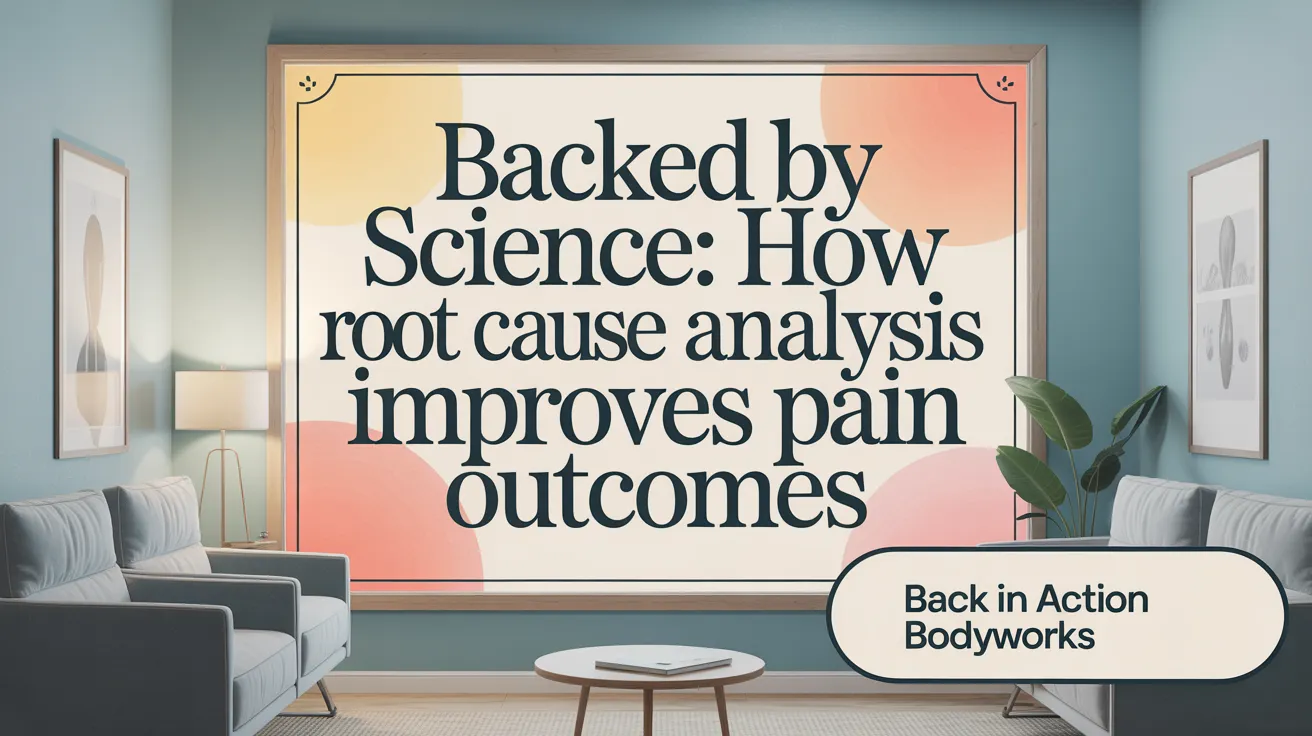
Research indicates that systematic approaches like root cause analysis (RCA) significantly enhance safety and treatment outcomes in pain management. Studies have demonstrated that employing RCA helps identify underlying systemic failures that may contribute to adverse events, allowing clinicians to implement targeted corrective measures.
For example, a number of healthcare facilities adopting RCA protocols have seen reductions in medication errors, procedural complications, and insufficient pain control incidents. This method encourages comprehensive evaluations—ranging from detailed patient histories to diagnostic testing—addressing not just symptoms but core causes.
Formal RCA procedures are increasingly recognized by medical and safety organizations as essential components for improving patient safety. Agencies such as the Joint Commission and the Institute for Healthcare Improvement underscore RCA's importance in reducing preventable harm and optimizing pain management practices.
In practice, RCA involves multidisciplinary teams rigorously analyzing each adverse event or persistent pain issue. This thorough investigation enables healthcare providers to develop robust action plans tailored to specific causes, ultimately resulting in safer interventions and better patient outcomes.
| Evidence Source | Findings | Implications |
|---|---|---|
| Healthcare studies | Significant reduction in adverse events post-RCA implementation | Supports proactive error prevention and safer pain therapy |
| Safety organization guidelines | Mandate routine RCA for persistent or unexpected pain complications | Reinforces the importance of systemic analysis in clinical settings |
| Clinical case reviews | Improved patient satisfaction and lower complication rates | Highlights the role of RCA in enhancing quality of care |
Understanding and applying RCA in pain management is not merely a procedural formality but a proven strategy rooted in scientific evidence to improve safety and effectiveness. As technology advances and pain treatments grow more complex, integrating systematic root cause analysis becomes even more essential for delivering high-quality, patient-centered care.
How Root Cause Focus Enhances Health Outcomes
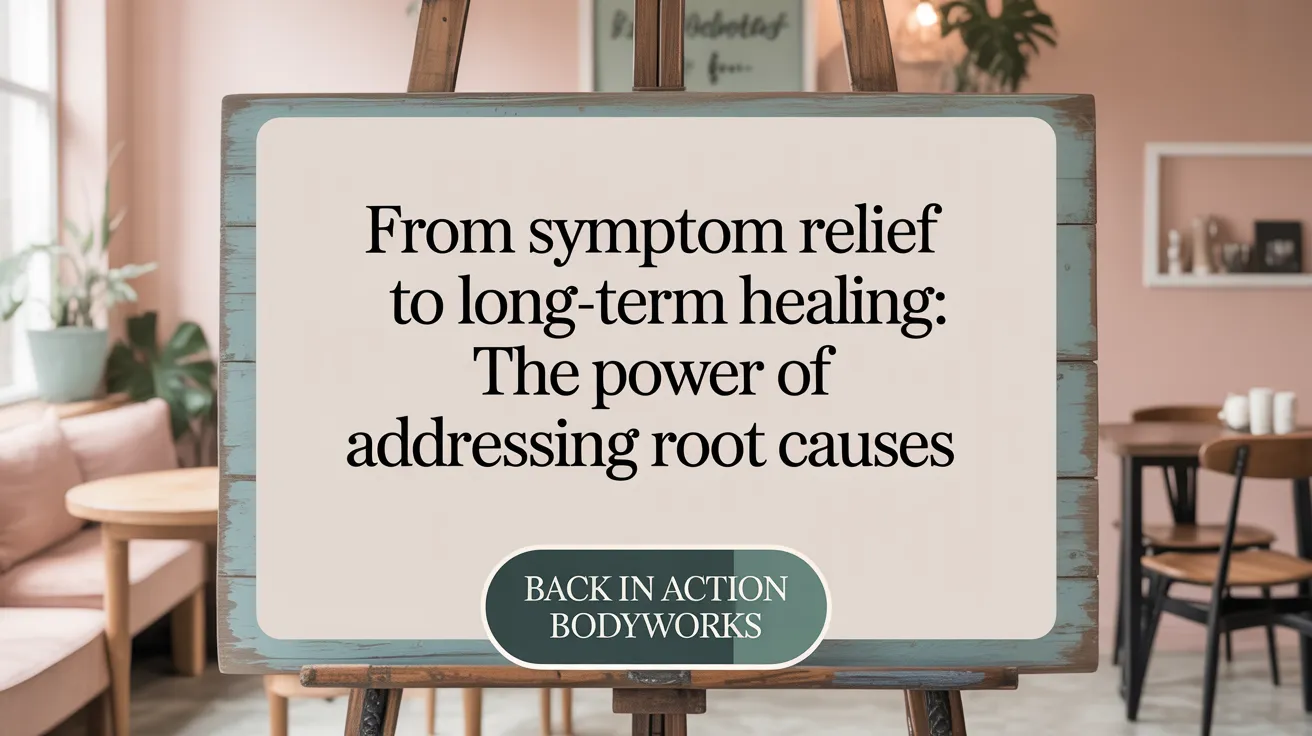
How does focusing on the root cause of pain lead to improved health outcomes?
Addressing the root cause of pain involves a thorough examination of underlying issues through detailed medical histories, physical assessments, and diagnostic tests such as imaging and lab work. By identifying what truly causes pain, treatments can be specifically tailored, rather than merely alleviating symptoms temporarily.
This targeted approach not only reduces the severity and frequency of pain but also minimizes unnecessary medication use, especially opioids, and diverges attention from transient relief to long-lasting solutions.
Focusing on causes helps prevent the transition from acute to chronic pain by intervening early and effectively, reducing the likelihood of persistent disability and emotional distress.
Furthermore, understanding and treating the underlying issue can improve overall health by restoring function and promoting psychological well-being. Patients often experience enhanced mobility, better sleep, and reduced anxiety when the source of pain is adequately addressed.
Prevention of chronic pain development and recurrence
Pinpointing and managing root causes can disrupt the cycle of ongoing pain that characterizes chronic conditions. In many cases, persistent pain states are driven by neurophysiological mechanisms such as central sensitization, which can be effectively moderated when the initial cause is targeted.
Preventing the development or recurrence of chronic pain involves combining early diagnosis with multidisciplinary treatments, including physical therapy, psychological support, and lifestyle changes. For instance, addressing lifestyle factors such as stress, nutrition, and sleep can significantly decrease the risk of pain becoming chronic.
By implementing these strategies, healthcare providers aim to reduce the incidence of long-lasting pain syndromes and improve the durability of treatment outcomes.
Improvement in quality of life through functional restoration
Treating the root cause often leads to physical improvements, helping individuals regain movement and daily functioning. When underlying issues are resolved, patients typically experience less discomfort, better mood, and increased participation in social and physical activities.
Holistic approaches that combine medical intervention with lifestyle modifications also help restore overall well-being, fostering resilience against future pain episodes.
In summary, focusing on the root cause not only alleviates existing pain but also offers a preventive and sustainable pathway toward better health, minimizing the cycle of pain, disability, and emotional distress.
| Aspect | Details | Benefits |
|---|---|---|
| Targeted Treatment | Identification through history, tests, exams | Precise, effective, minimizes side effects |
| Prevention | Early intervention with multidisciplinary care | Reduces chronic pain risk |
| Function | Restoration of mobility and daily activities | Enhances quality of life |
| Psychological Well-being | Addressing emotional factors and lifestyle | Reduces distress, improves resilience |
The Complex Nature of Chronic Pain and Its Management Challenges
Neurophysiological mechanisms behind chronic pain
Chronic pain is driven by intricate neurophysiological processes often involving central sensitization and changes in neural pathways. These mechanisms result in the nervous system becoming hyper-responsive, amplifying pain signals even when the original injury or cause has healed. Such changes can make pain persist long after tissue repair, complicating treatment.
Psychological influences such as anxiety, depression, and catastrophizing
Psychological factors significantly affect the experience and management of chronic pain. Conditions like anxiety and depression can heighten pain perception, while catastrophizing—an exaggerated negative outlook on pain—can worsen disability and emotional distress. Addressing these factors is essential for improving outcomes.
Limitations of medication-only approaches
Relying solely on medications, especially opioids, often fails to provide long-term relief in chronic pain cases. These drugs may mask symptoms but do not address the underlying neurophysiological or psychological causes. A multidimensional approach is necessary, incorporating physical therapy, psychological support, and lifestyle modifications.
| Aspect | Focus | Considerations |
|---|---|---|
| Neurophysiology | Chronic pain persistence | Central sensitization, neuroplasticity |
| Psychological | Emotional impact and pain perception | Anxiety, depression, catastrophizing |
| Treatment | Medication limits | Need for holistic, multidisciplinary strategies |
Understanding the complex interplay of biological and psychological factors in chronic pain underscores the importance of moving beyond medications alone. Tailored, integrative treatment plans offer better prospects for sustainable relief and improved quality of life.
Multidisciplinary Teams: A Collaborative Approach to Pain
What are the benefits of a comprehensive, multidisciplinary approach that targets underlying causes of pain?
This approach combines various therapies that address the physical, psychological, emotional, and social aspects of pain. It allows healthcare providers to accurately diagnose and tailor treatments to each individual. By focusing on the root cause rather than just symptoms, patients often experience better pain control, enhanced functioning, and an overall improvement in quality of life.
Roles of physicians, psychologists, physical therapists, nutritionists
Physicians, including specialized pain medicine doctors, play a central role in evaluation, diagnosis, and medical management. Psychologists contribute through therapies like cognitive behavioral therapy (CBT) to address emotional distress and pain-related behaviors. Physical therapists focus on restoring mobility, strength, and function through targeted exercises and manual therapies. Nutritionists help optimize diet and lifestyle factors that influence pain and overall health.
Integration of physical, psychological, and lifestyle therapies
Combining these approaches creates a holistic care plan. For example, physical therapy can reduce musculoskeletal pain while psychological interventions address pain catastrophizing and fear. Lifestyle modifications like improved sleep, hydration, and stress management support ongoing pain relief. This integrated method ensures that all factors impacting pain are addressed simultaneously.
Benefits of coordinated, patient-centered care
A team working together ensures personalized treatment plans, which are more effective than isolated interventions. This collaboration enhances communication, tracks progress comprehensively, and adjusts therapies as needed. It empowers patients to actively participate in their recovery, fosters better adherence, and can reduce reliance on medications, including opioids. Overall, such well-coordinated care improves outcomes and supports sustainable pain management.
Lifestyle Factors Influencing Pain and Recovery
How do hydration, sleep quality, nutrition, and stress impact pain?
A well-balanced lifestyle plays a significant role in managing pain levels. Proper hydration helps maintain tissue health and can reduce discomfort. Quality sleep is essential for healing and emotional regulation, while poor sleep often heightens pain perception. Nutrition influences inflammation and tissue repair, with anti-inflammatory diets aiding recovery. Stress can amplify pain signals via neurochemical pathways, making stress management vital for pain control.
What is the role of physical activity and mental health management?
Staying physically active can prevent stiffness and improve mobility, contributing to reduced pain. Exercise releases endorphins, which are natural painkillers and mood boosters. Simultaneously, managing mental health through techniques like mindfulness or psychotherapy helps reduce pain-related anxiety and depression, enhancing overall well-being. Addressing emotional health equips individuals with better coping skills.
How can lifestyle modifications be integrated into treatment plans?
Incorporating lifestyle changes into a pain management plan can lead to better long-term outcomes. Strategies include adopting a nutritious diet, establishing regular sleep routines, practicing relaxation techniques, and engaging in appropriate exercise. These modifications, supported by healthcare professionals, empower patients to take active roles in their recovery, reducing reliance on medications and promoting sustainable relief.
Psychosocial Dimensions of Pain and Disability
How do psychosocial factors like insomnia, pain catastrophizing, perceived injustice, and fatigue influence pain and disability?
Chronic pain is not just a physical issue; psychological and social factors significantly shape how pain impacts a person’s life. Insomnia, or sleep problems, can intensify perceptions of pain and increase disability. Pain catastrophizing—an exaggerated negative mindset about pain—can lead to heightened sensitivity and distress. Feelings of perceived injustice, where patients believe their pain or situation is unfair, also contribute to worse outcomes. Additionally, fatigue weakens resilience and can make pain feel more overwhelming.
These factors often interact, compounding their effects. For example, poor sleep may increase catastrophizing, which in turn can heighten perceived injustice, creating a cycle of worsening pain and disability.
How are these psychosocial factors associated with pain-related disability?
Research involving nearly 300 inpatients with chronic pain indicates these psychosocial factors account for over a quarter of variability in disability levels. Specifically, insomnia and pain intensity showed the strongest links to increased disability. Patients suffering from worse sleep and higher pain reports tend to experience greater limitations in daily activities.
Psychological distress, including anxiety and depression, also correlates with these factors, often leading to decreased physical functioning. This highlights the importance of addressing mental health and sleep issues in managing chronic pain.
What interventions target these psychosocial contributors?
Effective pain management increasingly emphasizes psychological and behavioral therapies. Approaches like cognitive-behavioral therapy (CBT) can help patients modify negative thought patterns related to pain, reduce catastrophizing, and improve coping skills.
Addressing sleep problems directly through sleep hygiene education or therapy can significantly ease the burden of pain and disability. Mindfulness, stress management, and relaxation techniques further help patients manage emotional distress.
Studies suggest that targeting psychosocial factors not only reduces pain perception but also enhances overall functioning and quality of life. Ultimately, a holistic treatment plan that includes psychological support alongside physical therapies offers the best chance for sustainable relief.
Pain Management Programs: Empowering Patients
How do Self-management skills like physical activity and mood regulation help in pain management?
Pain management programs (PMPs) focus on teaching individuals skills to better handle their pain and improve daily functioning. These skills include engaging in regular physical activity, which helps maintain mobility and strength without worsening pain.
Additionally, mood regulation techniques—such as relaxation exercises, mindfulness, and cognitive strategies—are incorporated to help manage emotional responses to pain. Managing stress and negative emotions can reduce the perception of pain and prevent it from becoming overwhelming.
Patients learn to identify and modify behaviors and thoughts that may contribute to their suffering, fostering a sense of control over their condition.
How does shifting focus from pain control to improving functioning and quality of life benefit patients?
Traditional pain treatments often aim solely to reduce pain intensity. However, PMPs emphasize enhancing overall functioning and life quality, even if some pain remains.
This approach involves education, psychological skills training, physical activity, and social support, enabling patients to participate actively in their recovery.
By prioritizing what patients can do rather than just what they feel, these programs help reduce disability and improve mental health, leading to a more fulfilling life despite ongoing pain.
What evidence supports the effectiveness of pain management programs?
Research shows that multidisciplinary PMPs provide substantial benefits. Patients often experience improvements in physical functioning, emotional well-being, and social participation.
For example, evidence indicates that PMPs can decrease anxiety, depression, and pain-related disability. They also promote self-efficacy—the confidence in managing pain—encouraging ongoing use of learned skills.
Moreover, these programs tend to reduce reliance on medications, including opioids, and increase patient satisfaction.
The success of PMP outcomes depends on team expertise, proper timing, and patient motivation, highlighting the importance of tailored and comprehensive care.
| Aspect | Details | Additional Notes |
|---|---|---|
| Skills Taught | Physical activity, mood regulation, goal setting, problem solving | Foundation of self-management |
| Focus Shift | From pain elimination to improved function and life quality | Central to modern pain therapy |
| Program Benefits | Decreased disability, better mental health, increased self-efficacy, reduced medication dependence | Supported by multiple studies |
| Essential Components | Education, psychological techniques, physical activity, multidisciplinary team support | Ensures comprehensive care |
Effective pain management is evolving to empower patients, focusing on what they can achieve rather than solely trying to eliminate pain.
Addressing Psychological and Emotional Factors for Better Outcomes
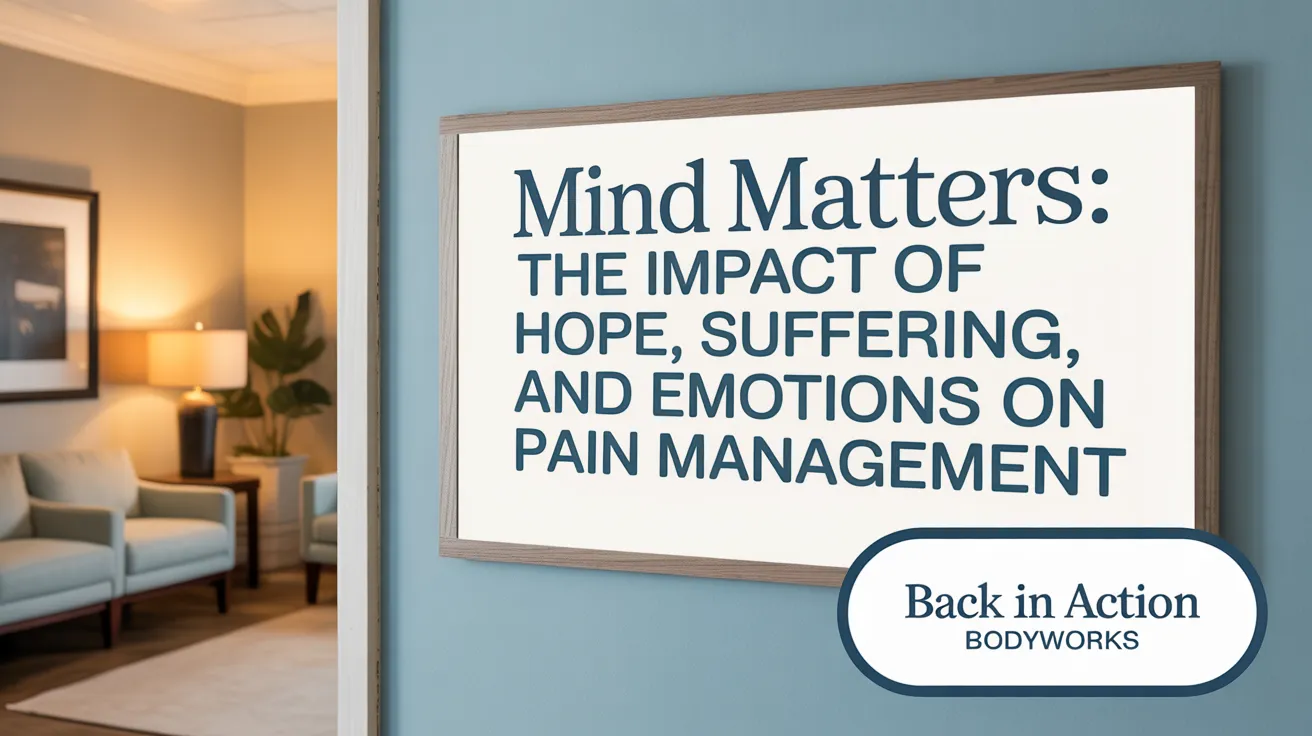
How do hope and suffering influence treatment outcomes?
Research highlights that psychological states such as hope and suffering significantly impact pain management success. Lower levels of hopelessness, or hope, at the start of treatment have been associated with reduced pain interference, anxiety, and depression afterward. Conversely, higher suffering levels tend to predict smaller decreases in anxiety following therapy.
In particular, addressing feelings of hopelessness can motivate patients and enhance their engagement in treatment strategies. Suffering, often linked to emotional distress, can hinder progress if left unaddressed.
What is the influence on anxiety, depression, and pain interference?
Studies involving interdisciplinary pain treatment show that fostering hope and reducing suffering can improve emotional well-being alongside physical pain outcomes. Patients with greater hope tend to experience less pain interference—the extent to which pain hampers daily activities—and report fewer symptoms of anxiety and depression.
By contrast, higher suffering at treatment onset correlates with less emotional improvement, underscoring the need for psychological support to target these factors.
Which psychological techniques are integrated into multimodal treatments?
Multidisciplinary pain programs often incorporate therapies aimed at emotional and cognitive aspects, such as cognitive-behavioral therapy (CBT), which can enhance mood regulation and change maladaptive thought patterns.
Additionally, techniques like hope therapy, mindfulness, and acceptance strategies are used to bolster patients' psychological resilience. Education about pain and training in self-management skills also empower individuals to handle their condition more effectively.
Including psychological components in a holistic treatment approach improves overall effectiveness, assisting patients in managing not just pain but also related emotional challenges.
| Aspect | Focus | Outcome |
|---|---|---|
| Hope | Build optimism | Reduced pain interference, anxiety, and depression |
| Suffering | Address emotional distress | Better emotional regulation |
| Techniques | CBT, mindfulness, self-management training | Improved functioning and quality of life |
This integrated approach emphasizes the importance of addressing psychological and emotional factors alongside physical symptoms to achieve sustainable pain relief and improve patient well-being.
Emerging Technologies and Future Directions
Personalized Medicine and Genetic Insights
Advancements in genetics are opening new avenues for understanding individual pain experiences. By analyzing genetic profiles, healthcare providers can identify biological predispositions to certain pain conditions. This personalized approach enables tailorable treatments that target specific genetic factors, potentially increasing effectiveness and reducing side effects.
Use of AI and Wearable Devices in Pain Assessment
Artificial intelligence (AI) and wearable technology are revolutionizing pain management by providing real-time monitoring and analysis. Wearable sensors can track physiological signs such as heart rate, muscle tension, and activity levels, offering objective data on pain fluctuations. AI algorithms process this data to help clinicians better understand pain patterns and tailor interventions accordingly.
Integration of Big Data and Causal Inference in Research
The growing use of big data allows researchers to analyze vast amounts of patient information, revealing complex interactions between biological, psychological, and social factors influencing pain. Coupled with advanced causal inference methods, these tools enable scientists to determine actual causes of pain, improving diagnosis and treatment accuracy. They facilitate systematic investigations, helping to develop more targeted and effective pain management strategies.
| Technology | Application | Benefits | Future Potential |
|---|---|---|---|
| Genetic Testing | Personalized medicine | Custom treatments targeting genetic predispositions | Enhanced treatment success rates |
| Wearable Devices | Continuous pain monitoring | Objective data collection | Real-time adjustments to care plans |
| AI & Big Data | Analyzing multi-dimensional data | Deep understanding of pain mechanisms | Development of predictive models for pain outcomes |
Emerging technologies in pain management promise to make treatments more precise, personalized, and effective. As research advances, integrating these innovations will be crucial in shaping future standards of care for chronic pain sufferers.
Non-Pharmacological and Complementary Therapies
Cognitive Behavioral Therapy (CBT)
Cognitive Behavioral Therapy (CBT) is an effective psychological treatment that helps patients manage chronic pain by changing negative thought patterns and behaviors. It addresses emotional factors like pain catastrophizing and psychological distress, which can intensify pain perception. By fostering positive coping skills, CBT aims to reduce the emotional burden of pain and improve overall functioning.
Massage, Acupuncture, and Yoga
Complementary therapies such as massage, acupuncture, and yoga are increasingly integrated into pain management plans. Massage therapy can relax muscles and improve circulation, reducing discomfort. Acupuncture, a traditional Chinese technique, involves stimulating specific points on the body to alleviate pain. Yoga combines gentle physical postures, breathing exercises, and mindfulness, promoting flexibility, relaxation, and mental well-being.
Minimally Invasive Medical Procedures
Minimally invasive procedures, including nerve blocks, stimulation therapy, and small surgical interventions, are options for addressing specific pain causes. These techniques aim to target pain signals directly, often providing relief when conservative treatments are insufficient. An interdisciplinary team typically evaluates whether these interventions are suitable, ensuring a personalized approach.
Table 1: Overview of Non-Pharmacological and Complementary Pain Management Techniques
| Method | Description | Benefits | Typical Use Cases |
|---|---|---|---|
| CBT | Psychological therapy to modify pain-related thoughts | Reduces emotional distress, improves coping | Chronic pain with psychological factors |
| Massage | Manual manipulation of soft tissues | Relieves muscle tension, enhances circulation | Musculoskeletal pain |
| Acupuncture | Stimulating specific body points | Pain relief, energy balance | Neuropathic pain, chronic migraine |
| Yoga | Combining physical and mindfulness exercises | Improves flexibility, reduces stress | Chronic pain, overall well-being |
| Minimally Invasive Procedures | Targeted interventions such as nerve blocks | Direct pain signal interruption | Localized nerve or joint pain |
Incorporating these therapies into a comprehensive, multidisciplinary pain management plan can offer relief beyond medication, addressing multiple aspects of pain and improving patients’ overall quality of life.
Balancing Medication and Non-Medication Treatments
When managing pain, healthcare providers often balance the use of medications with non-pharmacological approaches. Various medication types serve different roles. Non-steroidal anti-inflammatory drugs (NSAIDs) and acetaminophen are common for mild to moderate pain, while anticonvulsants and antidepressants may be prescribed for nerve-related pain. Topical analgesics and muscle relaxers also help target specific symptoms. However, opioids, although effective for short-term relief, carry significant risks.
One of the major concerns with opioid use is dependence, which can lead to misuse and other serious health issues. As a result, many treatment plans emphasize minimizing reliance on opioids whenever possible.
Integrated programs often combine medications with therapies such as physical therapy, psychological counseling, and complementary practices like acupuncture or yoga. These non-medication approaches can improve functioning, manage emotional distress, and reduce pain-related disability.
An interdisciplinary outlook ensures that each patient’s treatment is tailored, addressing both physical symptoms and underlying psychological factors. This approach not only enhances pain relief but also promotes sustainable, long-term well-being.
| Treatment Type | Primary Role | Associated Risks or Benefits |
|---|---|---|
| NSAIDs, Acetaminophen | Symptom relief | Fewer risks compared to opioids |
| Opioids | Severe pain management | Dependence, overdose risk |
| Physical therapy | Improve mobility | Non-invasive, supports long-term function |
| Psychological therapy | Emotional support, coping skills | Addresses mental health aspects |
Blending medication with non-medication therapies offers a balanced strategy to effectively manage pain while minimizing potential harms.
Root Cause Focus: A Pathway to Sustainable Pain Relief and Enhanced Quality of Life
Focusing on the root cause of pain represents a paradigm shift in pain management—from temporary symptom relief toward sustained healing and improved functionality. Scientific evidence supports root cause analysis as a critical tool for uncovering underlying causes, enabling targeted interventions that reduce chronic pain and associated disabilities. A multidisciplinary, holistic approach that integrates physical care, psychological support, lifestyle modifications, and patient empowerment ultimately leads to better health outcomes, decreases reliance on medications, and enhances quality of life. Embracing this comprehensive strategy promotes safer, more effective pain treatment and fosters long-term well-being for patients worldwide.
References
- The Importance of Identifying the Root Cause of Pain for ...
- Determining the Root Cause of Pain
- Living well with chronic pain: the role of pain-management ...
- The effect of psychological factors on pain outcomes
- Associations between pain intensity, psychosocial factors ...
- How Treatment Motivation Predicts Favorable Outcomes in ...
- The Benefits of a Multidisciplinary Approach to Pain ...
Recent articles

Simple Lifestyle Adjustments to Maintain a Healthy Spine

Personalized Nutritional Counseling for Improved Health Outcomes

Exploring Non-Surgical Treatments for Spine-Related Conditions

An Introduction to Spinal Decompression for Sciatica Patients

Transformative Success Stories: Patient Experiences with Chiropractic Treatments

Why Chiropractic Care Is Essential for Back Pain Relief

Addressing Underlying Causes Versus Symptom Management in Pain Care

The Role of Nutrition in Enhancing Chiropractic Treatment Effectiveness

Sciatica Treatment Options: Is Spinal Decompression Right for You?

Lifestyle Tips to Maintain a Healthy Spine and Prevent Back Issues

The Synergy Between Physiotherapy and Chiropractic Treatments

What Happens During Your Initial Chiropractic Consultation

Effective Corrective Exercises for Sustainable Pain Management

Taking a Root Cause Approach to Chronic Pain Management

Holistic Pain Management Techniques Without Surgery

How Patient Success Stories Validate Chiropractic Care Benefits

Spinal Decompression: Innovative Treatment for Sciatic Nerve Pain

Spinal Decompression Therapy: A Non-Invasive Approach to Sciatica Relief

Exploring Holistic Approaches Beyond Surgery for Pain Relief

Practical Lifestyle Advice to Support a Healthy Spine Every Day

Corrective Exercise Routines Designed for Long-Term Pain Prevention

Real Patient Stories: Overcoming Chronic Pain with Chiropractic Care

Lifestyle Changes That Promote a Healthy Spine and Prevent Injury

How Addressing the Root Cause of Pain Leads to Lasting Relief

Non-Surgical Holistic Therapies to Manage Chronic Pain Effectively

Nutritional Counseling's Impact on Physical Health and Healing

Benefits of Regular Chiropractic Care for a Stronger Back

Your First Chiropractic Visit: What to Expect and How to Prepare

Patient Experiences: How Chiropractic Care Transformed Their Lives

Exploring Holistic, Non-Surgical Options for Pain Management

Combining Physiotherapy with Chiropractic Treatments for Enhanced Recovery

Holistic Treatments That Offer Alternatives to Surgery for Pain Relief

Corrective Exercise Strategies for Long-Term Spine Health

How Physiotherapy Complements Chiropractic Adjustments for Better Outcomes

First-Time Chiropractic Visitors: What You Should Know

Understanding the Importance of Treating Pain at Its Source

Adopting Lifestyle Changes to Support Your Spine's Wellness

Utilizing Physiotherapy to Enhance Chiropractic Treatment Outcomes

The Key Advantages of Chiropractic Care for Back Pain Sufferers

Why Focusing on Root Causes Improves Pain Treatment Success

Corrective Exercises That Promote Lasting Pain Relief and Mobility

Sciatica Relief Through Targeted Spinal Decompression Techniques

Preparing for Your First Chiropractic Appointment with Confidence

Healthy Lifestyle Habits for Maintaining Spinal Alignment

Success Stories Highlighting Chiropractic's Role in Pain Recovery

Top Benefits of Chiropractic Care for Chronic Back Pain

Nutrition Tips to Boost Your Overall Wellness and Recovery

How Chiropractic Care Alleviates Back Pain Naturally

How Nutritional Counseling Supports Overall Wellness and Spine Health

Step-by-Step Guide to Your First Visit with a Chiropractor

Using Nutrition to Support Chiropractic and Overall Wellness

Integrating Physiotherapy in Your Chiropractic Healing Journey

How Physiotherapy Complements Chiropractic Adjustments for Faster Healing

Lifestyle Tips for Maintaining a Healthy Spine and Preventing Back Pain

Heartwarming Patient Testimonials Highlighting Chiropractic Success

How Proper Nutrition Supports Chiropractic and Physiotherapy Treatments

Combining Physiotherapy and Chiropractic Treatments for Optimal Recovery

Why Chiropractic Treatments Are Effective for Managing Back Pain

Choosing a Chiropractor: Tips for Finding a Trusted Provider

Integrating Physiotherapy and Chiropractic: Benefits and What to Expect

How Tailored Corrective Exercises Can Aid in Pain Management

Chiropractic Care: A Proven Solution for Alleviating Back Pain

What to Expect at Your First Chiropractic Visit: A Comprehensive Guide

The Importance of Root Cause Analysis in Effective Pain Management

The Role of Corrective Exercises in Sustaining Pain-Free Living

Combining Chiropractic and Physiotherapy for Comprehensive Pain Relief

How Addressing Underlying Causes Improves Pain Treatment Effectiveness

Maintaining Spinal Health Through Lifestyle Changes and Preventive Care

Understanding the Benefits of Chiropractic Adjustments for Back Pain Sufferers

Spinal Decompression Therapy: A New Hope for Sciatica Relief

Lifestyle Recommendations to Support a Healthy Spine and Reduce Pain

Choosing the Right Chiropractor: Key Factors to Consider Before Your First Appointment

Non-Invasive Treatment Alternatives: A Holistic Approach to Pain Relief

Corrective Exercises to Support Long-Term Relief from Chronic Pain

Exploring Non-Surgical Approaches to Spine Health and Wellness

Tips for Daily Habits That Keep Your Spine Strong

Success Stories: How Chiropractic Treatments Changed Lives

Why Focusing on the Root Cause of Pain Leads to Better Outcomes

Nutritional Counseling and Its Impact on Overall Wellness and Recovery

Patient Testimonials That Showcase the Power of Chiropractic Care

Preparing for Your First Chiropractic Appointment: What You Need to Know

Holistic Treatment Options: Beyond Surgery for Pain Relief
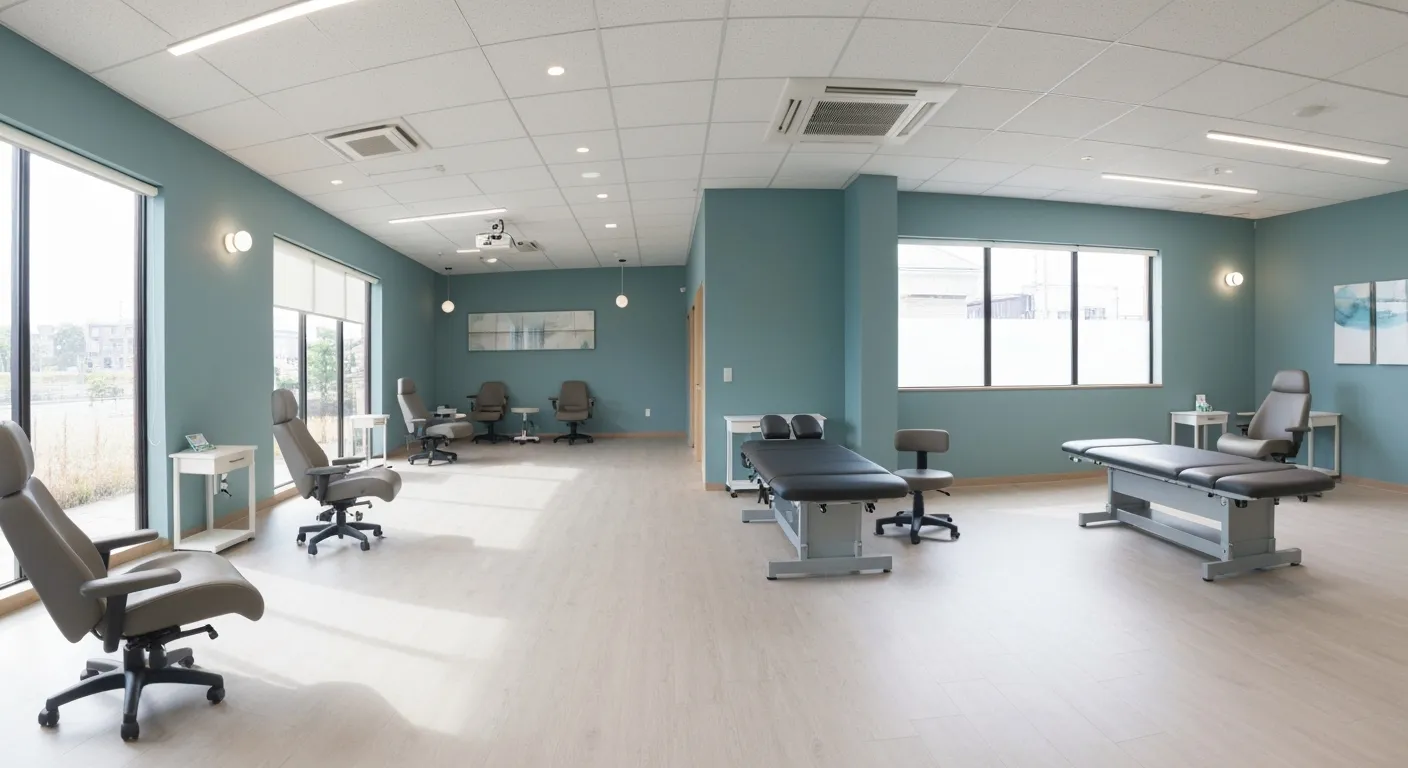
Holistic Pain Relief Methods That Avoid Surgery

Nutritional Strategies for Supporting Spine Health and Recovery

First Chiropractic Visit: What Happens and How to Prepare

Chiropractic Patient Success Stories: Inspiring Journeys to Wellness
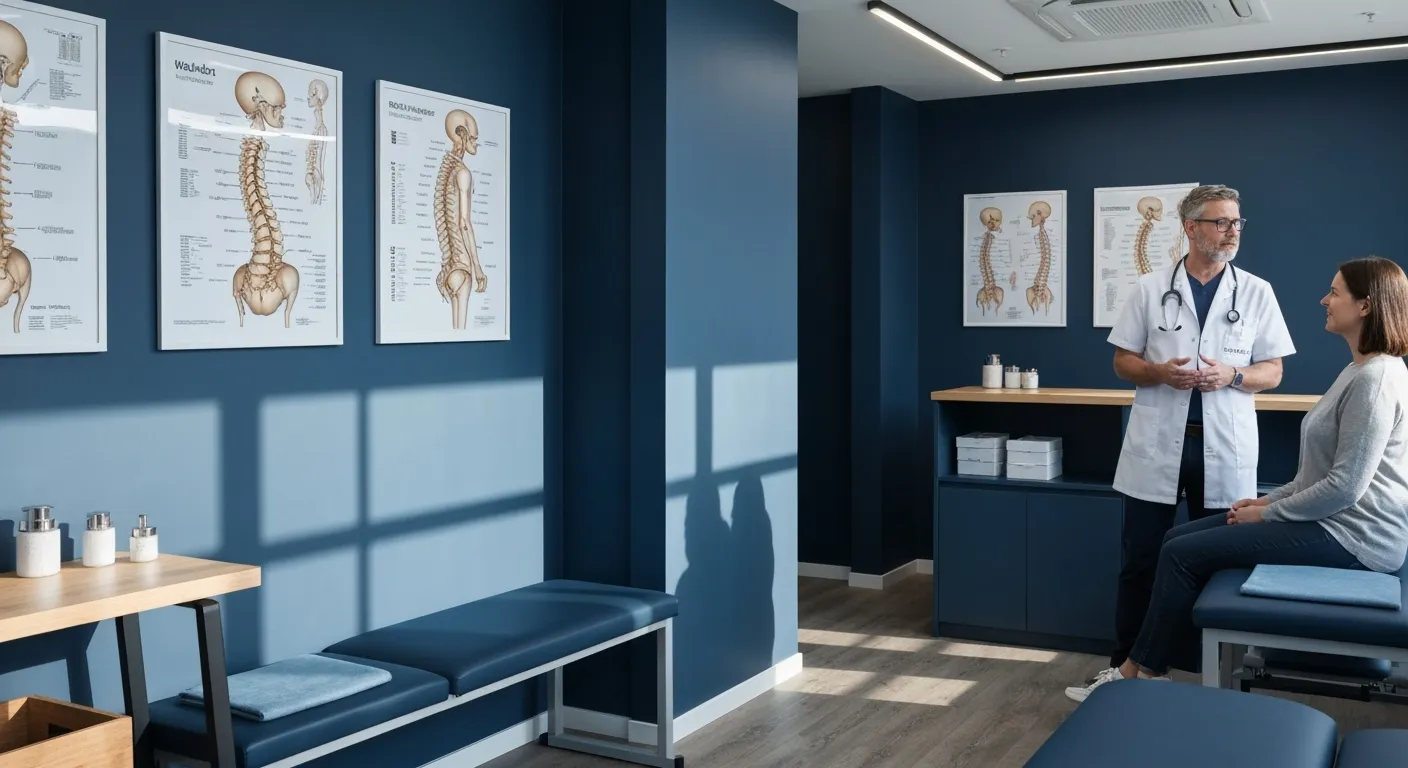
Effectiveness of Spinal Decompression Therapy in Managing Sciatic Nerve Pain

Addressing Pain at Its Source: Why Treating the Root Cause Matters

Corrective Exercise Programs Designed for Long-Term Pain Prevention

Healthy Lifestyle Advice for Maintaining Spinal Alignment

Understanding Spinal Decompression as a Treatment for Sciatica Pain

Benefits of Chiropractic Care Specifically for Back Pain Relief

Understanding Gait Analysis in Physiotherapy
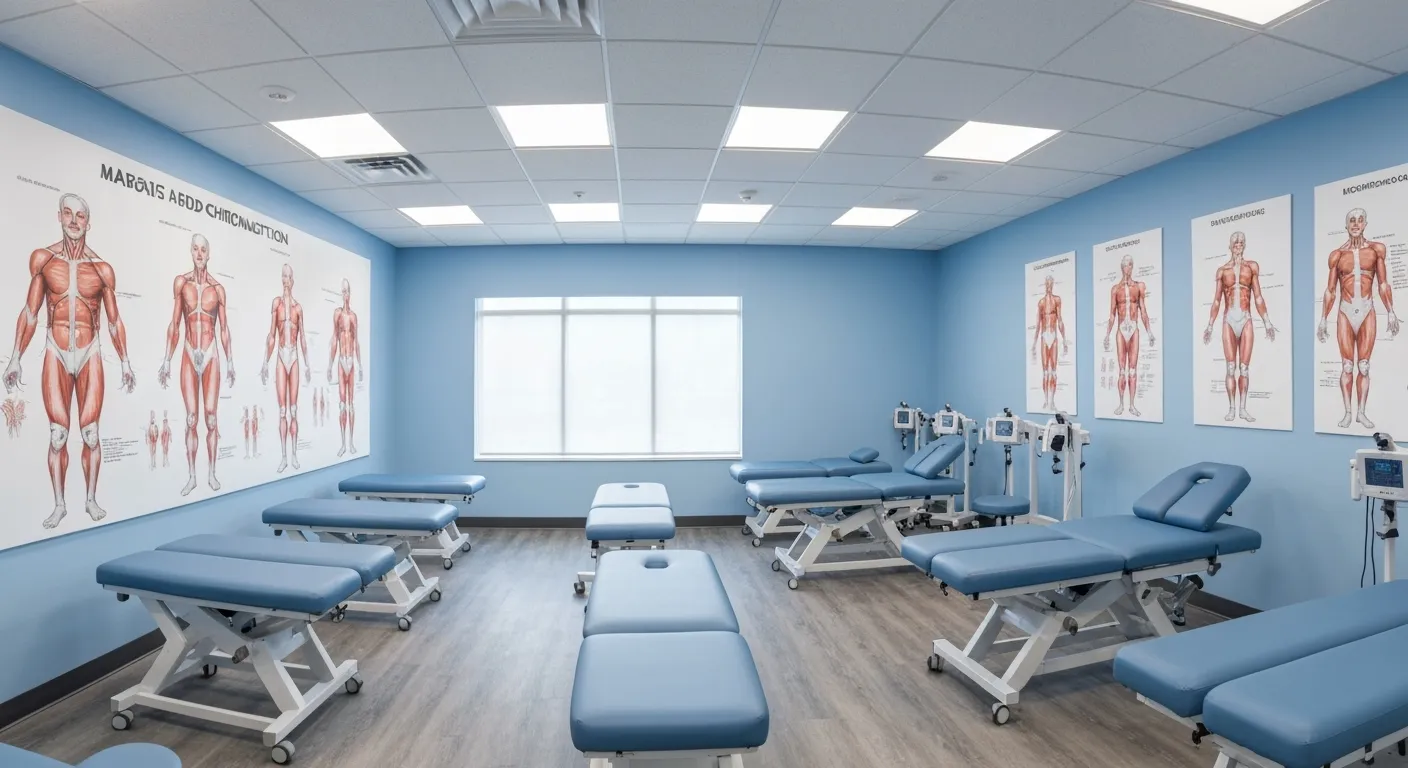
The Difference Between Muscle Soreness and Dysfunction

Workplace Stress Statistics: How Muscle Tension Impacts Productivity

How Physiotherapy Improves Mobility for Seniors

How to Communicate Pain Levels to Your Therapist Effectively
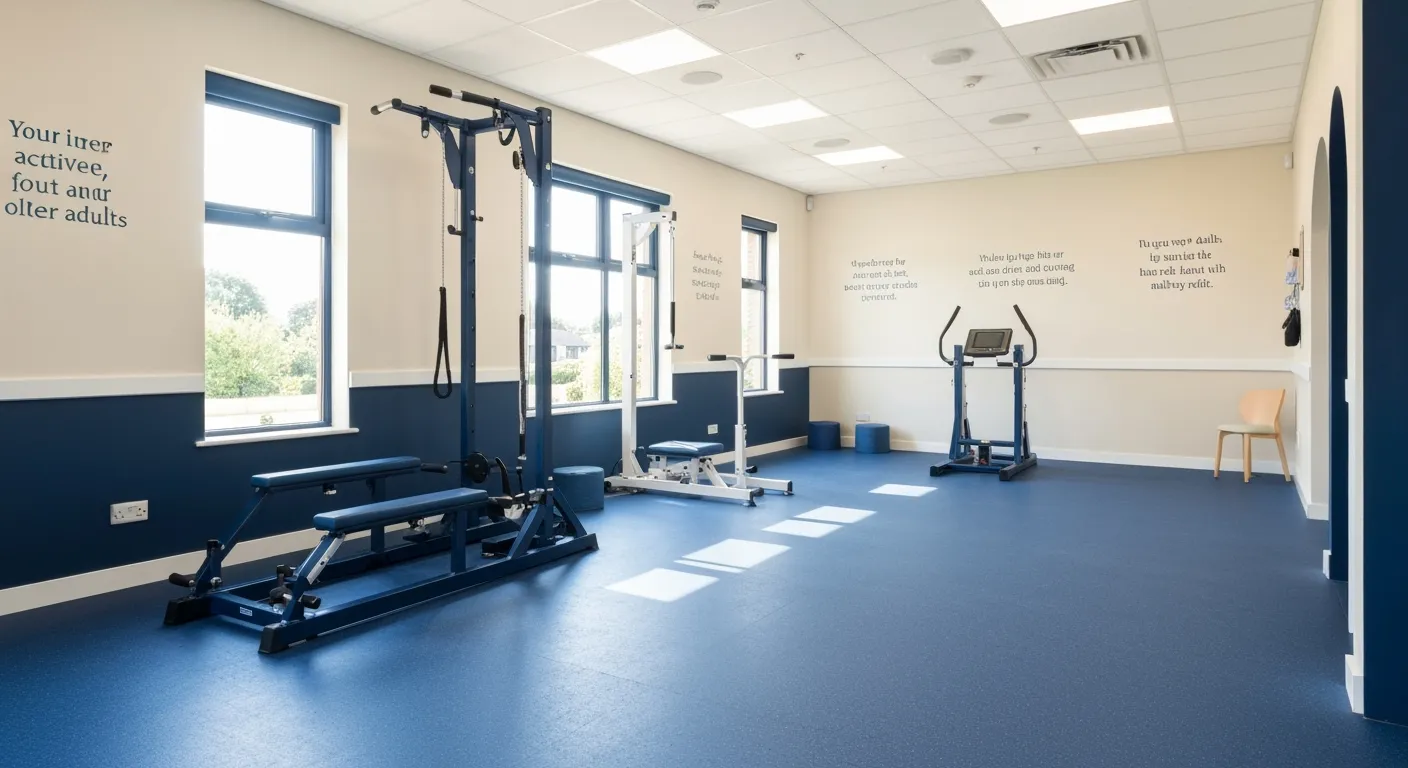
Physiotherapy Interventions for Balance and Fall Prevention

How Physiotherapy Helps Post-Surgical Recovery

